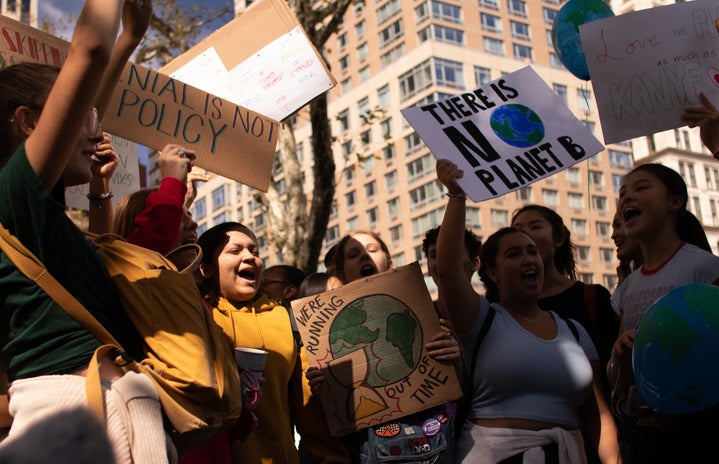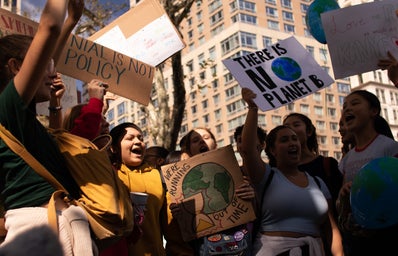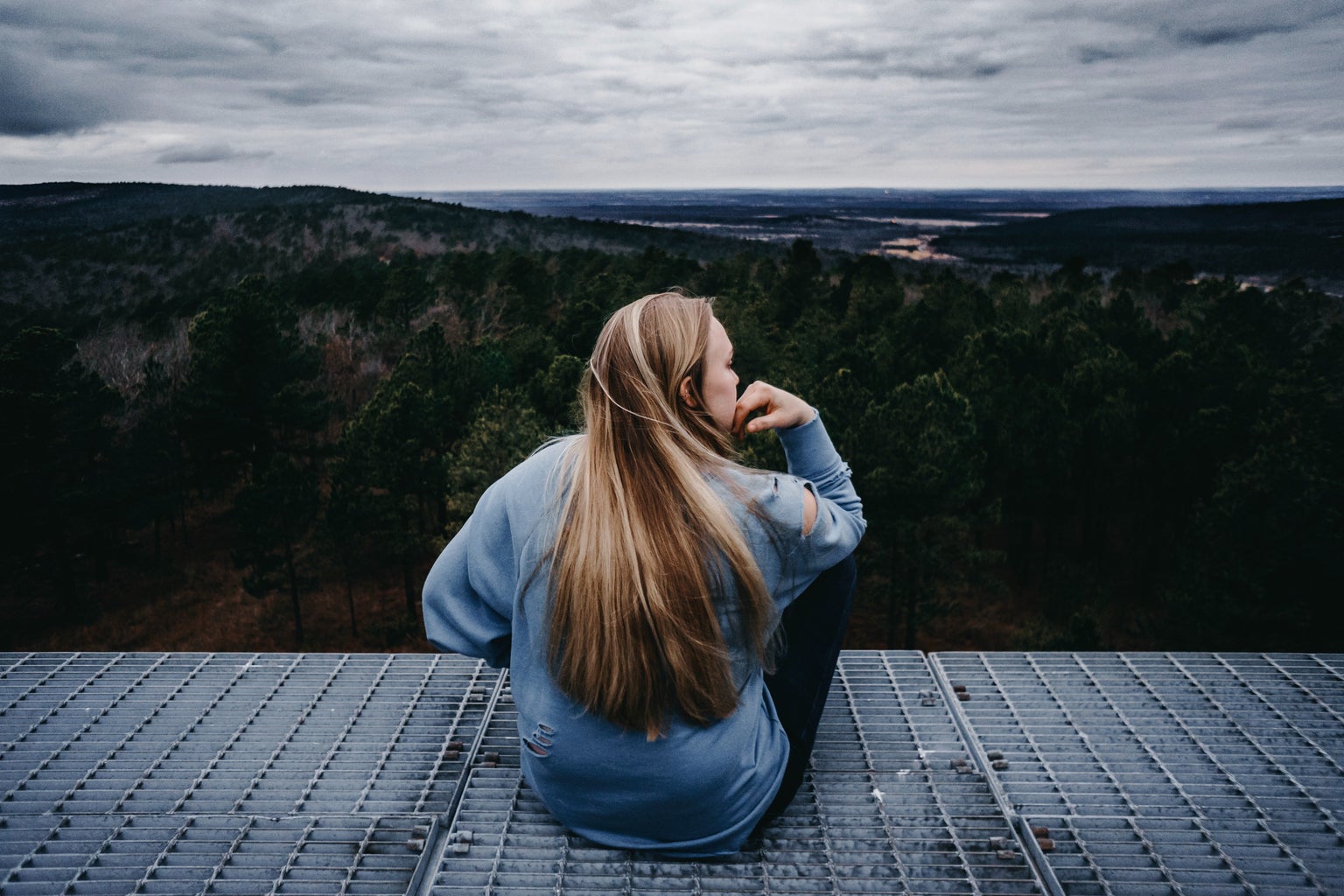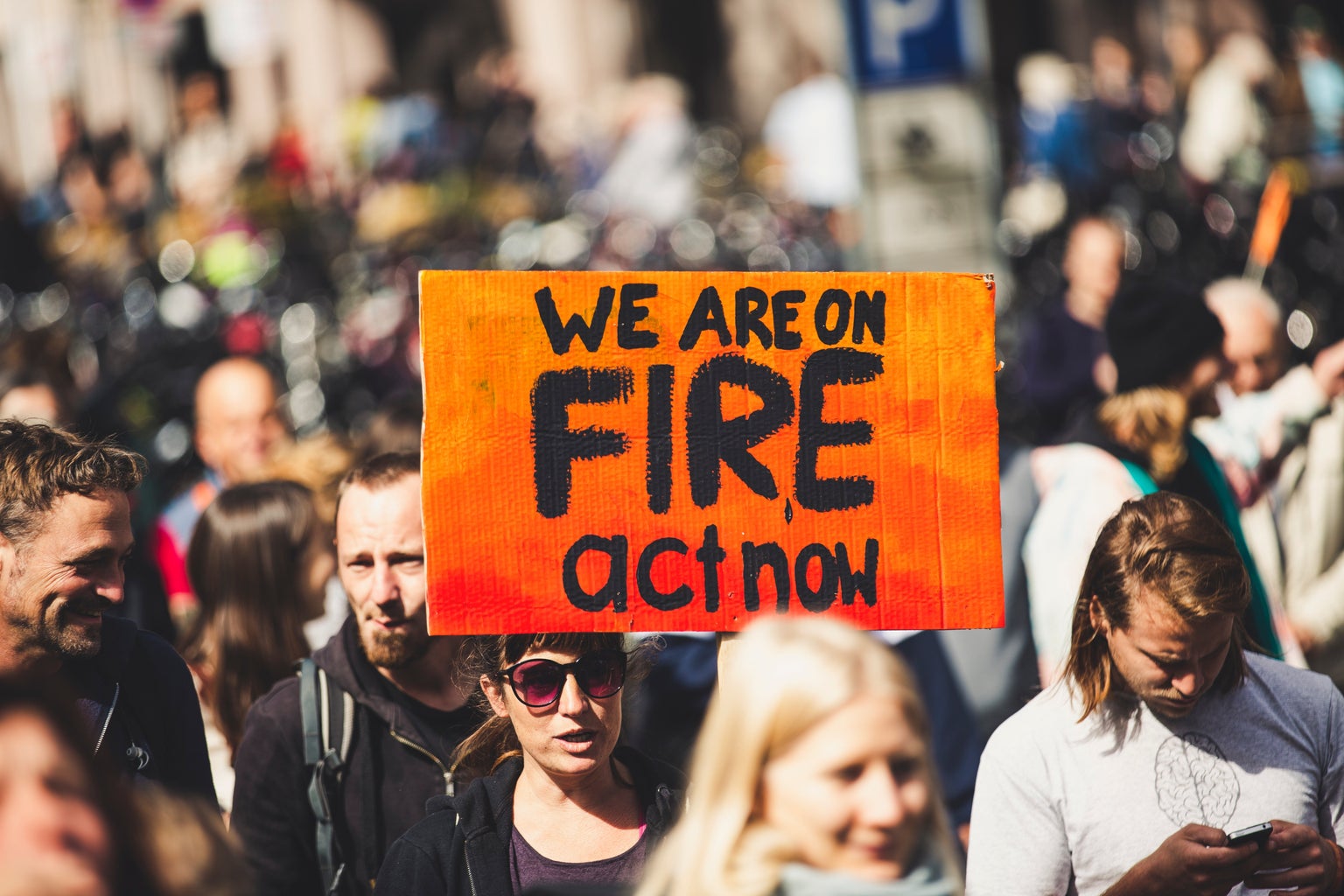Nowadays it seems like whenever you turn on the news or browse through your social media page, there is another natural disaster destroying a habitat or another species being placed onto the endangered species list. We don’t even have to look very far to see how recurrent California wildfires are e.g. the Thomas Fire, Camp Fire.
Every year is called the hottest year the planet in human history and each year that record is broken. And now we get the news that scientists predict that the planet has 12 more years of relative normality until there is lasting, catastrophic damage that cannot be reversed.
Understandably, most people feel overwhelmed when they think about the Climate Crisis. We often blame large corporations, who are the root of the problem. However, we must take into consideration that we as consumers have the choice to demand sustainability and environmentally friendly production.
If you are concerned about the Climate Crisis and want to reduce your carbon footprint but have no idea how to go about it, you have come to the right place.
These are 5 ways you as an individual can reduce your carbon footprint.
- Change Your Diet
-
We all know that a healthy diet of vegetables, fruits, whole grains and lean sources of protein such as chicken and fish is recommended by doctors. But did you know that by choosing to eat less meat you significantly reduce your carbon footprint?
The beef industry is the main contributor to methane gas emissions. A single cow can produce as much as 150 lbs of methane gas a year, and currently there are about 1.5 billion cattle in the world.
By choosing to cut down on meat, especially red meat, you’re not only benefitting in terms of health but also in helping save the environment. You can replace red meat with equally protein-rich plant based foods such as broccoli, corn, lentils and beans.
The poultry and fishing industries are also large emitters of greenhouse gases and often negatively impact the ecosystem, so choosing to cut back or cut chicken and fish from your diet would also be a savvy choice.
If vegetarianism or veganism is not for you, you can always try the Mediterranean diet which consists of a largely plant based diet but low to moderate amounts of dairy products, poultry and fish.
- Transportation: Use More Public Transportation
-
Apart from being a costly weekly or bi-weekly expense, cars are a huge contributor to annual greenhouse gas emissions. An average American car produces about 5 tons of carbon dioxide a year. To combat this, try utilizing public transportation.
The Santa Barbara Metropolitan Transit District (SBMTD) offers free services for UCSB students, making getting around the Santa Barbara and Goleta area free. (It’s paid for in our tuition already!)
When choosing transportation over long distances, consider carpooling or taking the train. Traveling by airplane is also detrimental to the environment. A flight from LAX to JFK produces 1.5 tons of CO2. If you must travel by plane, try taking economy class as flying first class emits 9x more CO2 into the atmosphere than economy.
- Home: Make Eco Friendly Choices
-
As college students we probably don’t have much say in our housing situation in general. As UCSB students we are content with having a bed and a beach view. Nevertheless, we can still make environmentally conscious decisions inside of our homes.
You can simply start by turning off electrical appliances that are not in use as well as taking quick showers instead of baths. Baths usually require around 70 gallons of water, while taking a five-minute shower uses 10 to 25 gallons. Using less heating and air conditioning will also require less electricity and save you money in monthly gas and electric fees.
Eventually we will all move out of Isla Vista into our own personal houses with mortgages and bills. As we progress through life, it is very common to get married and have a family.
In order to fight climate change the human population must remain under 10 billion people, this is the estimated amount of people expected to be living in 2050. Sometime in the near future, government policies might restrict the number of children a family can have, thus I believe we can all make our own part by choosing to have one to two children in each family.
- Buying: Buy Second Hand and/or High Quality Items
-
Dear reader, if you’re anything like me, you love shopping, especially online shopping. The feeling of buying new clothes, makeup or house decorum is an inexplicable rush. However, I have come to realize that this mentality is a product of our consumerist American culture.
Studies have shown that buying small amounts of reusable, durable or high quality items will actually improve a person’s positive outlook than a person who buys many things of little value.
To make the long story short, whenever you buy a cheap clothing item from big retail stores, you are a participant of the fast fashion trend. Fast fashion is just as it sounds: trendy and cheap clothing that goes out of style quickly.
And just as quickly as they are bought, they are discarded into landfills that release greenhouse gases as they decompose. An ingenious way to get around fast fashion is from solely buying thrifted or vintage clothing. If more people began buying through thrifted clothing stores or buying high quality items in small amounts, the demand for new cheap clothing would be significantly reduced. This could end the fast fashion industry.
- Activism: Be the Change You Wish to See
-
If you truly want to see radical change and mass movement to solve the Climate Crisis, the most important thing you can do is… vote! By voting, you and like-minded individuals will put people in power who can champion these environmental concerns.
Politicians, both local and national, are heavily influenced by the public. So if the public suddenly demands policies such as carbon tax or sustainable resource production, politicians will be swayed to enact these changes sooner rather than later.
We all feel small in comparison to the ever present and ever daunting problem of the Climate Crisis. It is, without a doubt, the biggest problem facing our generation. At times we feel helpless and even dismiss this issue, believing that we as individuals can’t do anything when it was multinational corporations who began greenhouse gas emissions. I argue, however, that the individual has a huge impact in the future of our planet.
We shouldn’t wait to be ordered into drastic changes that could be met up with refute. The beauty of these five methods is that they are relatively easy for anyone to do. If everyone made these changes in their life, we would cut our carbon footprint in half.
We can all afford to eat a little better or use public transportation. We can all recycle and use less electricity. We should all learn to find contentment in little things that are worth more than materiality. Finally and most importantly, we should all stand up for our principles values and stand up for our planet’s future.
The ideas presented in this article were taken from lecture material presented in English 23 with permission from Professor Ken Hiltner at UCSB. Professor Hiltner is very educated and well-versed in this matter. I highly recommend taking English 22 or English 23 in which he covers the Climate Crisis in great detail.





